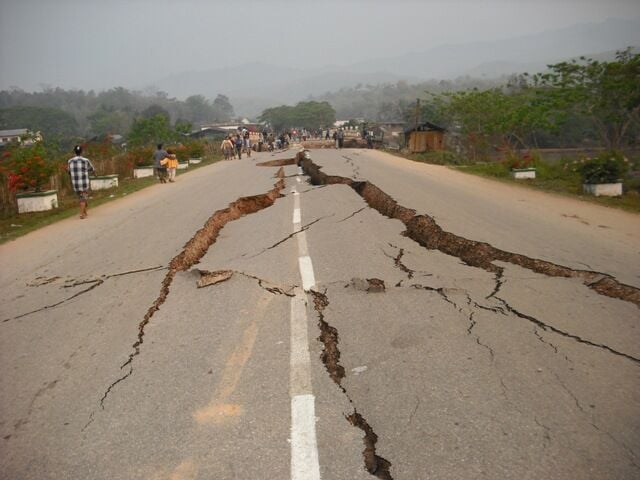Seismic upheaval in Myanmar prompts call for earthquake-resistant structures in Thailand

A seismic upheaval of 6.4 magnitude rattled Myanmar and was perceptible in various regions of Thailand yesterday, prompting engineers and academics to urge the implementation of stringent regulations to ensure the resilience of structures against future earthquakes.
The earthquake, with a magnitude of 6.4, originated in Myanmar at 8.37am yesterday. The Earthquake Observation Division of the Meteorological Department reported the epicentre to be roughly 100 kilometres northwest of the Mae Sai district in Chiang Rai.
The United States Geological Survey (USGS) stated the epicentre was approximately 76 kilometres southwest of Kengtung township in Shan State, at a depth of nine kilometres. In the aftermath, three aftershocks with magnitudes of 4.1, 3.5 and 3.4 were detected.
The tremors were discernible in various districts of Chiang Rai, Chiang Mai, Lamphun, parts of Nan and several areas in Bangkok. The quake also reached the northern region of Mae Hong Son, as well as Udon Thani and Khon Kaen in the Northeast.
Amorn Pimanmas, the head of the Thailand Structural Engineers Association (TSEA), assured that the earthquake’s strength was insufficient to bring down buildings in the North. The buildings affected were primarily low-rise or medium-rise structures. Structures in Bangkok, about 1,000 kilometres from the epicentre, also experienced the tremors. However, the distance should have mitigated any significant structural damage.
Amorn referenced a 2021 ministerial regulation which mandates specific criteria for earthquake-resistant building designs in 43 provinces nationwide, inclusive of the North and Bangkok.
Prepared for future earthquakes
The head of TSEA advised against panic but emphasised the necessity for preparedness for potential future earthquakes with greater magnitudes or closer proximities to Thailand. He stressed the importance of strengthening the structural integrity of buildings to withstand earthquakes, and that both new and existing buildings should be constructed or reinforced with this in mind.
Suchatwee Suwansawat, a past president of the Council of Engineers, voiced his concerns about Bangkok, where there are at least 10,000 high-rise buildings. He recognised the government’s 2021 regulation as a positive step, but urged City Hall to inspect older buildings constructed before 2021 and advise owners to strengthen their foundations, reported Bangkok Post.
Arun Pinta, chief of the Chiang Mai Disaster Prevention and mitigation office, reported that the tremor was felt for about five seconds by residents in high-rise buildings and staff and patients at Maharaj Nakorn Chiang Mai Hospital.
The director of the Earthquake Observation Division, Prasan Sangwandet, attributed the earthquake to the shifting of the Kengtung fault in Myanmar’s Shan State. He noted that Myanmar is a seismic hotspot with numerous faults, making earthquakes a common occurrence. He also stated that numerous aftershocks were reported after the initial quake, and more are anticipated within the next one to two months.
Latest Thailand News
Follow The Thaiger on Google News:


























